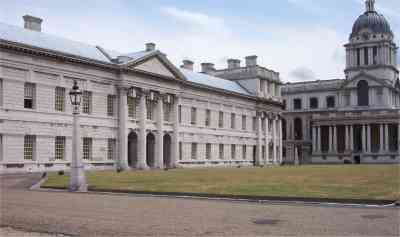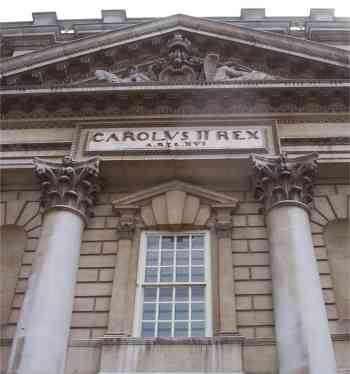National Maritime Museum London England
Being an island nation and once the world's greatest power, built on naval supremacy, Great Britain's maritime history is at the forefront of its history. The National Maritime Museum London was formally established by an Act of Parliament in 1934 and opened to the public by King George VI on the 27th of April 1937. There are about 2.5 million items, but as is a common practice, many are on loan to museums elsewhere in the United Kingdom. The public galleries at Greenwich are thematically arranged.. The government funds the museum with additional income derived from trading activity and sponsorship. Entry is free.
National Maritime Museum
 |
It took the efforts of the Society for Nautical Research that was founded in 1910 to bring about the creation of the National Maritime Museum in Greenwich. It independently developed the aim of founding a national naval and nautical museum. Its main intellectual and organizational force was Sir G. Callender who would later on become the Museum's first director. It made various public appeals and in 1927, one of its members, Sir. J. Caird rose to the occasion. He purchased the A.G.H MacPherson collection of maritime prints (over 11000 items) as well as the ship models from the training ship Mercury. This act was the catalyst for many other items being donated and purchased.
When Sir J. Thornhill's completed the Painted Hall in 1726, Greenwich took off as a cultural destination. This building is now in the Old Royal Naval College. From 1823, a 'National Gallery of Naval Art' that would include up 300 portraits, paintings and artefacts, was created in the Hall. A separate museum was also established in the Hospital buildings when it became the Royal Naval College in 1873. Following its establishment, collections and items from all over the country related to maritime history were then transferred to its care. These would include the Painted Hall's collection in 1938. Following the move of the Royal Hospital School at Greenwich to Suffolk in 1933, the Queen's House and related buildings were vacated. The House was then transferred to the NMM and fully restored in 1951
 |
Not forgetting its architecture, the Queen's House was inscribed as a UNESCO World Heritage Site in 1997. Flamsteed House was the first purpose built scientific research facility in Great Britain. There is a small museum at Cotehele Quay on the Tamar, Cornwall the NMM/National Trust sailing barge Shamrock and the Valhalla Ships figurehead collection on Tresco, Isles of Scilly.
The Museum has the most important holdings in the world on the history of Great Britain at sea, including maritime art (both British and 17th Century Dutch art), cartography, ship models and plans, navigational instruments, and astronomy based at the Observatory. The National Portrait Gallery only exceeds its British portrait collection. Naturally, Nelson and Cook are given precedence. It has the largest maritime historical reference library (over 100000 volumes) including books dating back to the 15th Century.
 |
The development of the internet gave the Museum the opportunity to present its collections online. One has access to almost 6000 catalogue records and over 7000 images of objects from the ceramic, firearm, sundial, quadrant and commemorative medal and coin collections. The Greenwich website offers an illustrated database of paintings and content on the major themes of maritime art.
All the buildings have been recently upgraded. The most renovation of the galleries was completed in 1999 and focused on what is now the Neptune Court. From December 2002, the majority of the NMM small boat collection will be on display at the new National Maritime Museum, Cornwall, Falmouth.
For more information on the National Maritime Museum Click Here
